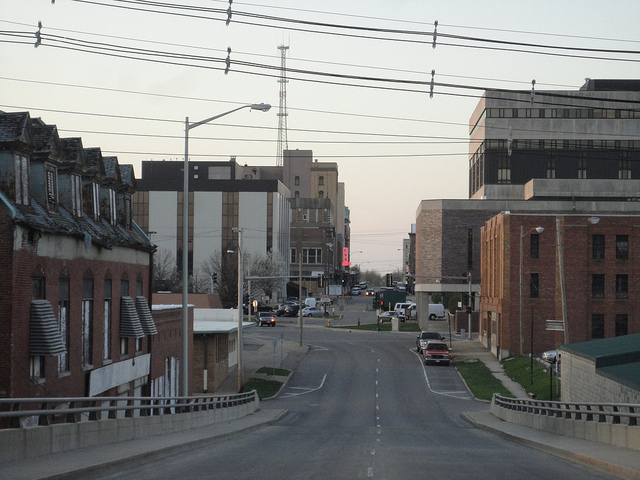If percentage statistics had significance, the story about construction employment in Illinois in the past year would be the best and the nearly the worst in the country — depending on whether you were seeking work in the Bloomington metro area, or you had the misfortune to be in Danville.
The Associated General Contractors of America (AGCA) says that the largest percentage gains occurred in the Bloomington, IL metro area, with a 63 percent gain jobs in the 12 months between June 2016 and June 2017. Of course, the 1,900 jobs increase pales in comparison to the absolute numbers in Riverside-San Bernadino (Inland Empire), CA, which gained 18,100 jobs in the same period (though the growth was only 20 per cent.)
Meanwhile, Danville ranks as one of the biggest job losers in the country percentage wise, at a loss of 17 per cent. But the loss translates to only 100 jobs.
What could explain the rather sudden growth in employment in Bloomington? Possibly it relates to the revitalization of the former Mitsubishi Auto plant in Normal, which has been acquired by Rivian Automotive, which is preparing to employ upwards of 1,000 people to manufacture a new line of cars.
Nation-wide, construction employment increased in 264 out of 358 metro areas between June 2016 and June 2017, declined in 57 and stagnated in 37, according to a new analysis of federal employment data released by the AGCA. Officials noted that even though most metro areas added construction jobs, the employment gains were particularly pronounced in the western third of the country.
“Western metro areas, from southern California and Nevada to Oregon and Washington, logged many of the largest absolute and percentage increases in construction employment in the past year,” said Ken Simonson, the association’s chief economist. “In contrast, the metros with the largest job losses were all in the middle or eastern portions of the country.”
Riverside-San Bernardino-Ontario, CA added the most construction jobs during the past year (18,100 jobs, 20 percent), followed by Los Angeles-Long Beach-Glendale, CA (10,400 jobs, 8 percent); Las Vegas-Henderson-Paradise, NV (9,900 jobs, 18 percent); Portland-Vancouver-Hillsboro, OR/WA (8,200 jobs, 13 percent) and Tampa-St. Petersburg-Clearwater, FL (8,200 jobs, 12 percent). Besides Bloomington, other high employment percentage growth communities included Lewiston, ID/WA (29 percent; 400 jobs); Lake Charles, LA (24 percent, 4,700 jobs); Riverside-San Bernardino-Ontario; Detroit-Dearborn-Livonia, MI (19 percent, 4,200 jobs) and Merced, CA (19 percent, 400 jobs).
The largest job losses from June 2016 to June 2017 were in Houston-The Woodlands-Sugar Land, TX (-5,200 jobs, -2 percent), followed by Middlesex-Monmouth-Ocean, NJ (-2,900 jobs, -7 percent); St. Louis, MO-IL (-2,600 jobs, -4 percent); Kansas City, MO (-1,900 jobs, -7 percent) and Toledo, OH (-1,800 jobs, -11 percent). The largest percentage decreases for the year were in Grand Forks, N.D.-MN (-21 percent, -1,000 jobs); followed by Danville, IL (-17 percent, -100 jobs); Casper, WY (-12 percent, -400 jobs); Toledo and Charleston, WV (-10 percent, – 700 jobs).
Association officials noted that inconsistent metro area job growth was coupled with declining construction spending figures released yesterday. They urged Congress and the White House to act quickly to fund and finance needed upgrades to the nation’s aging infrastructure. These new investments would help boost demand for construction across more areas and provide the kind of improved infrastructure needed to support broader economic growth.
“Finding new ways to fund and finance needed infrastructure repairs will help ensure that construction job growth remains both widespread and robust,” said Stephen E. Sandherr, the association’s chief executive officer. “More important, modernizing our aging and overused public works will make our economy more efficient and help boost overall economic growth.”






